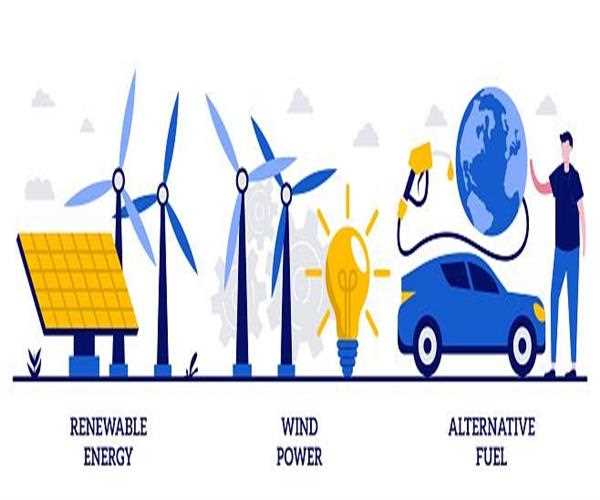Search here

24-Feb-2023
What is the fuel of the future-2023 view
This is true that in the upcoming years, fuel is future in the world and slowly and gradually everyone will accept it because currently, what we are using today is not good for the environment as well as the health.
Petrol, Diesel, Ethanol, Methanol, LPG, CNG - these all fuels are used today. But let me tell you, the world is going to adapt renewable and green energy in the upcoming years
But why these green energies put significant impact on the world’s environment and what is the future of it?
I am going to discuss it
From renewable sources like solar and wind to alternative fuels like hydrogen, the future of fuels in the world is bright.
Here are the six trends in which fuel can be shaped in the future
Solar Energy : Solar energy is one of the most promising clean energy sources available today. It has the potential to provide a large percentage of the world’s energy needs, and its use is growing rapidly.
Solar photovoltaic (PV) technology converts sunlight into electricity, and can be used on a small scale (e.g., for powering a home) or a large scale (e.g., for powering an entire city). Solar energy is becoming increasingly efficient and cost-effective, making it a viable option for more and more people
This energy can be used for a variety of applications, including generating electricity, heating water, and powering vehicles and is well suited for use in remote areas where other energy sources are not available.
Wind energy : As the world looks for ways to become more sustainable, wind energy is becoming an increasingly popular option. Wind energy is a clean and renewable resource that can be used to generate electricity. Wind turbines convert the kinetic energy of the wind into electrical energy that can be used to power homes and businesses
There are many benefits. Wind energy is emissions-free, so it doesn’t contribute to air pollution or climate change. It’s also a very efficient form of energy production; a single wind turbine can generate enough electricity to power hundreds of homes. And, because wind energy is a renewable resource, it’s an environmentally friendly option for powering our homes and businesses.
Geothermal Energy: The Earth generates and stores thermal energy as geothermal energy. The energy that controls a substance's temperature is known as thermal energy. The planet's initial formation and the radioactive decay of materials (like uranium, thorium, and potassium) in the Earth's interior are the sources of geothermal energy in the crust. This heat can be harvested for a variety of uses, including space heating and cooling, powering electricity-generating plants, desalination plants, and agricultural greenhouses
Hydroelectricity : Hydroelectricity is one of the most popular forms of renewable energy, and it's easy to see why. Hydroelectric power plants can be built in a variety of locations, including near large rivers, lakes, and dams. Best of all, hydroelectricity is a very efficient way to generate electricity. In fact, hydroelectric power plants can convert as much as 95% of the energy in moving water into electricity.
Green Hydrogen : One of the objectives that nations around the world have established for the year 2050 is to decarbonize the planet. One key to this is decarbonizing the production of an element like hydrogen, which is currently responsible for more than 2% of global CO2 emissions, to produce green hydrogen.
The chemical process known as electrolysis is the foundation of this technology. Hydrogen is a universal, light, and highly reactive fuel. The hydrogen and oxygen in water are separated by this method by using an electrical current. As a result, we will be able to produce energy without releasing carbon dioxide into the atmosphere if this electricity comes from renewable sources.
According to the IEA, this method of obtaining green hydrogen would conserve the 830 million tonnes of CO2 that are released into the atmosphere each year when fossil fuels are used to produce this gas. Similarly, 3,000 TWh/year of new renewable energy would be required to replace all grey hydrogen in the world.
Nuclear Energy : There's no denying that nuclear energy is a controversial topic. But despite the dangers, nuclear power plants provide about 20% of the world's electricity.
That’s because nuclear energy has some major advantages over other sources of energy. For one, it produces large amounts of power with very little pollution. In fact, nuclear plants produce no emissions at all – meaning they don’t contribute to climate change or smog.
What’s more, nuclear plants can operate for many years without needing to be refueled. This makes them much cheaper to run than other types of power plants.
As we transition into a new era of energy sources and technologies, it's important to keep up with relevant trends.
We explored five fuel trends that have potential to become the fuels of the future. All of these options are worth investigating further in order to create a more sustainable future for our planet. With careful consideration and investment into scientific research and development initiatives now, our world will be focusing towards green and renewable energy.

SEO and Content Writer
I am Drishan vig. I used to write blogs, articles, and stories in a way that entices the audience. I assure you that consistency, style, and tone must be met while writing the content. Working with the clients like bfc, varthana, ITC hotels, indusind, mumpa, mollydolly etc. has made me realized that writing content is not enough but doing seo is the first thing for it.
Join Our Newsletter
Subscribe to our newsletter to receive emails about new views posts, releases and updates.
Copyright 2010 - 2025 MindStick Software Pvt. Ltd. All Rights Reserved Privacy Policy | Terms & Conditions | Cookie Policy